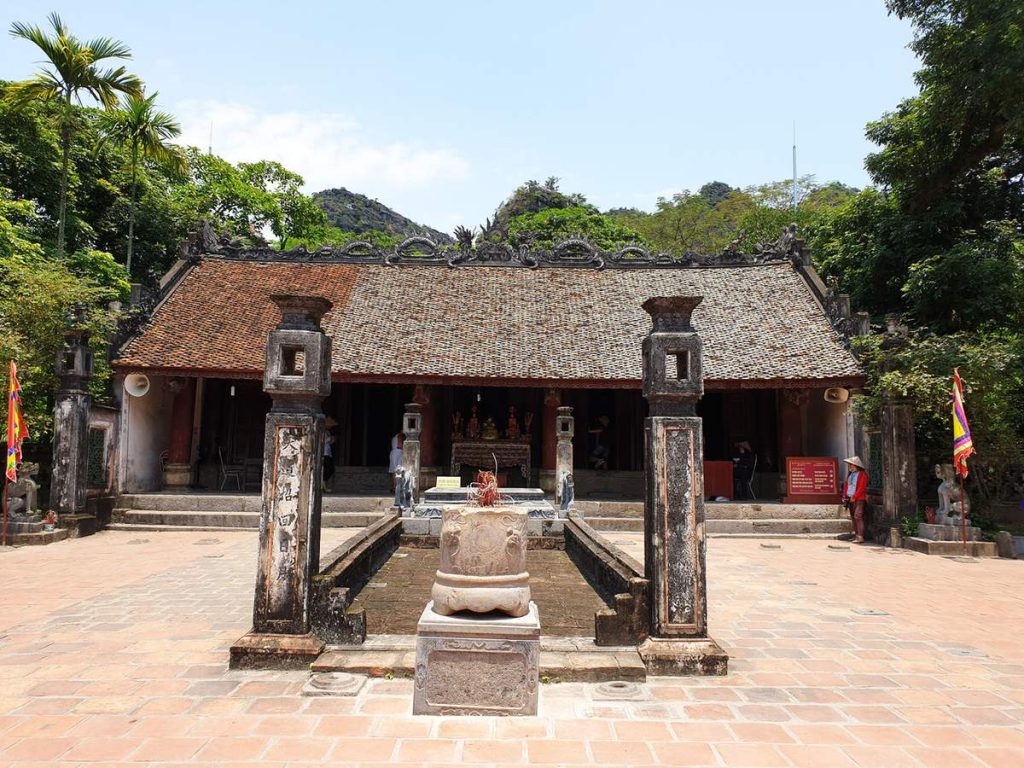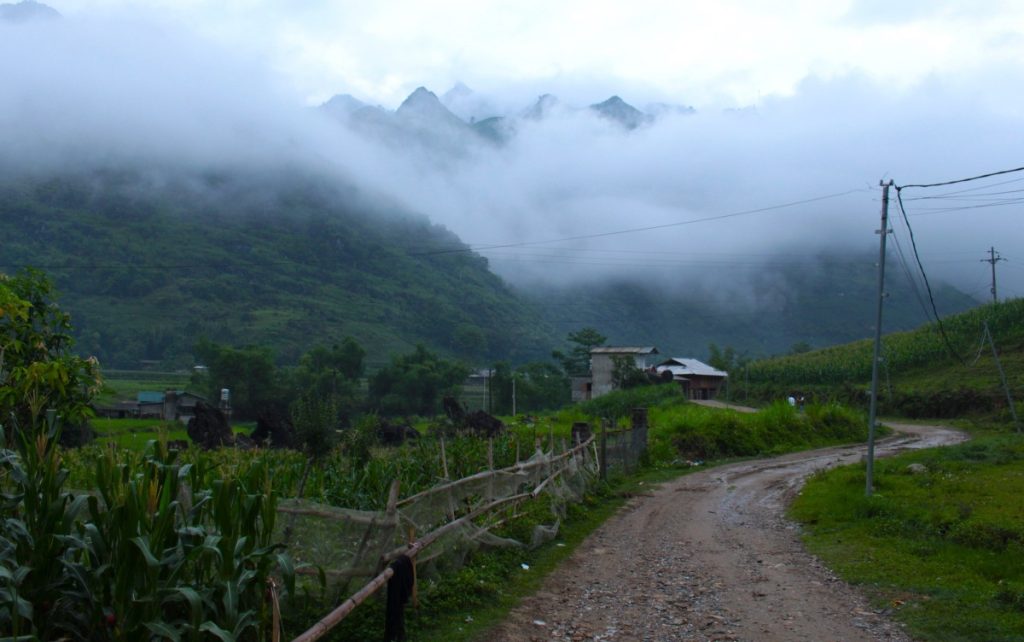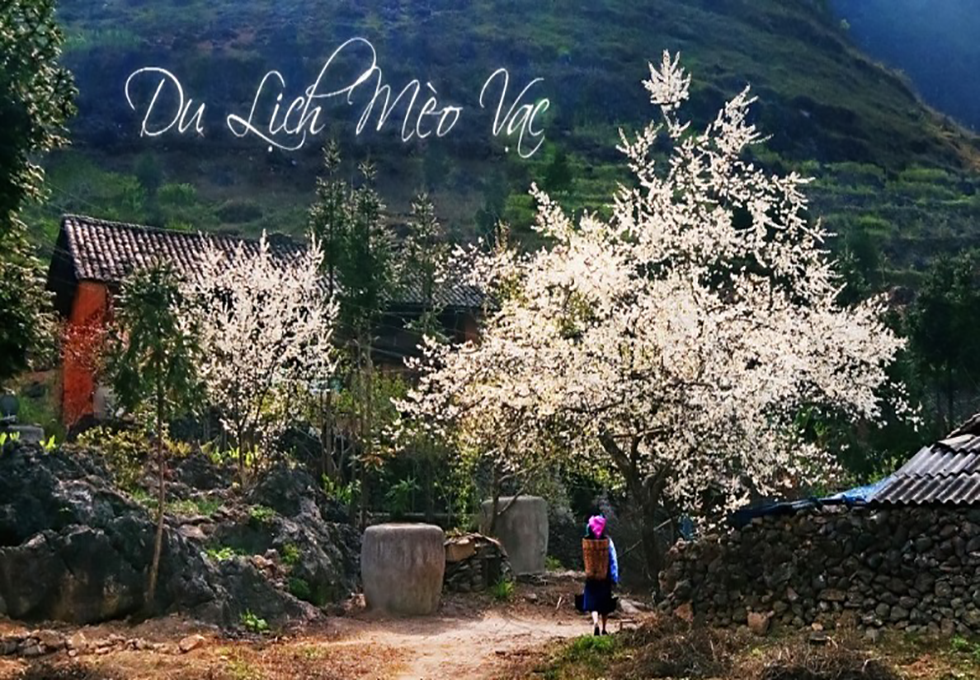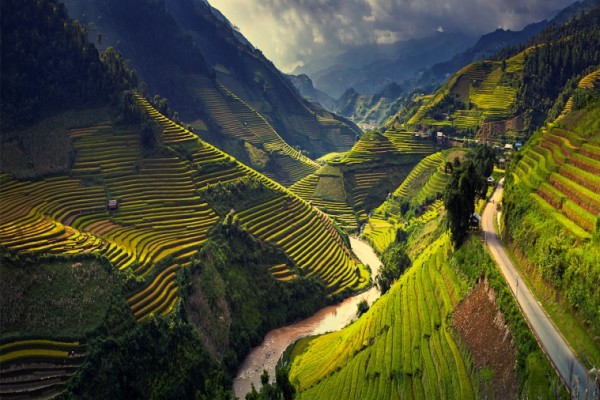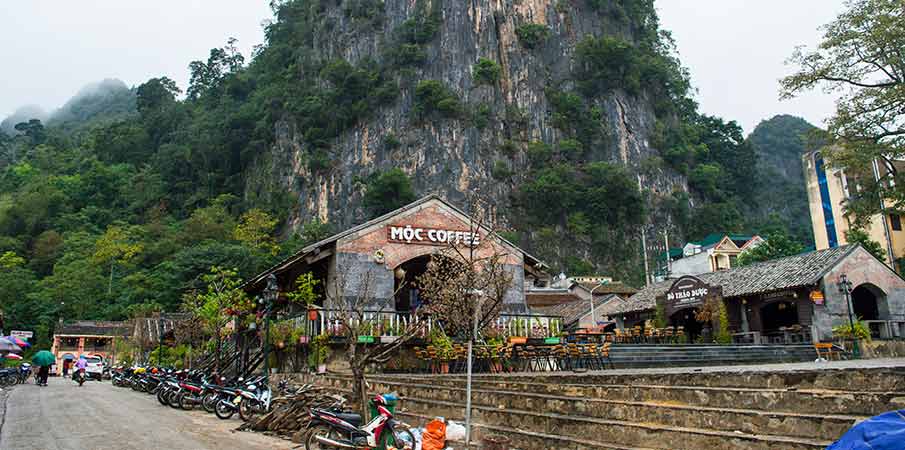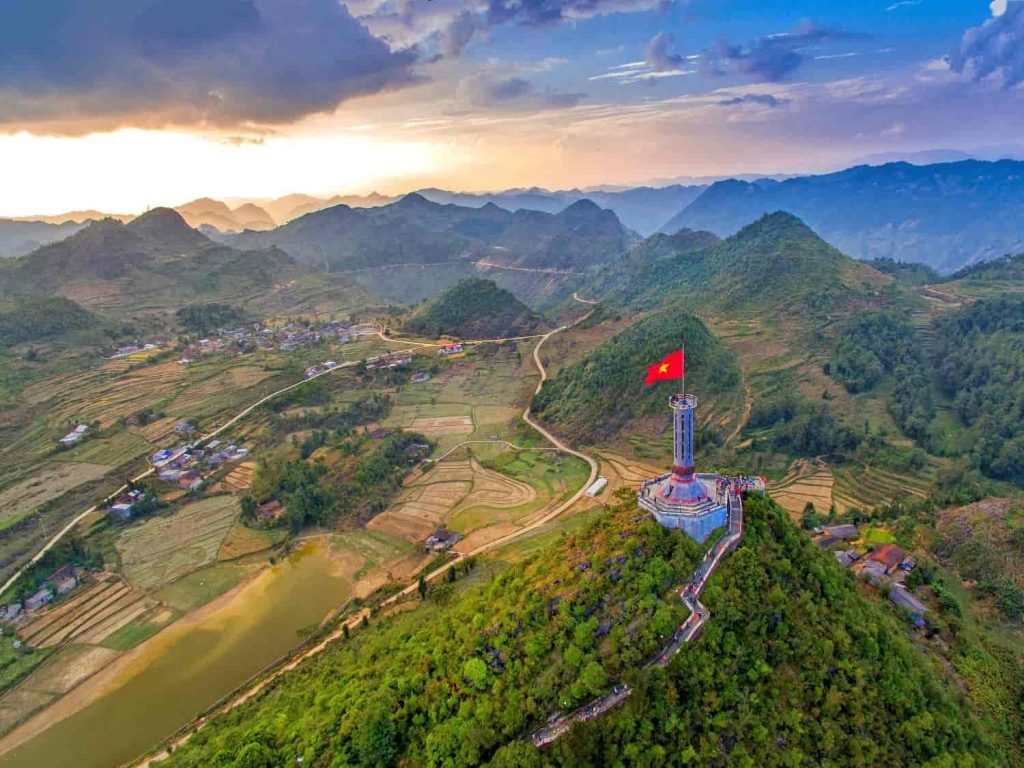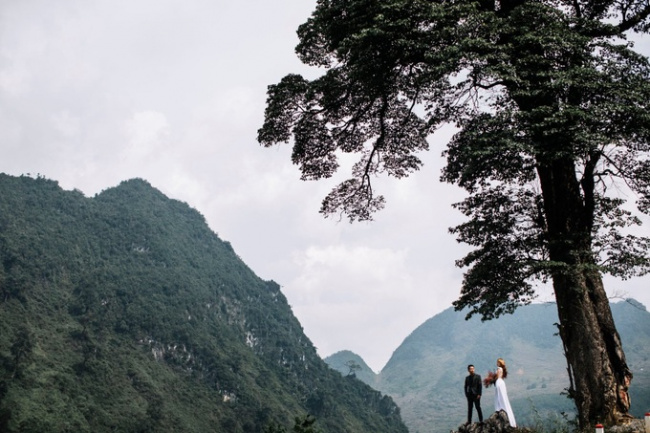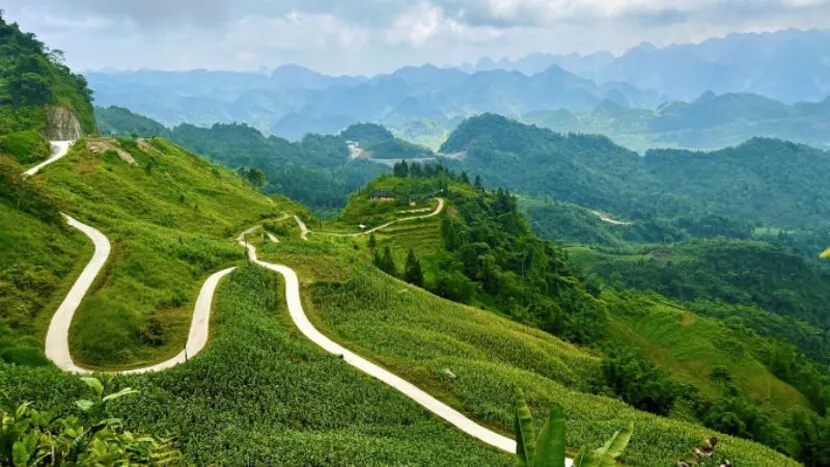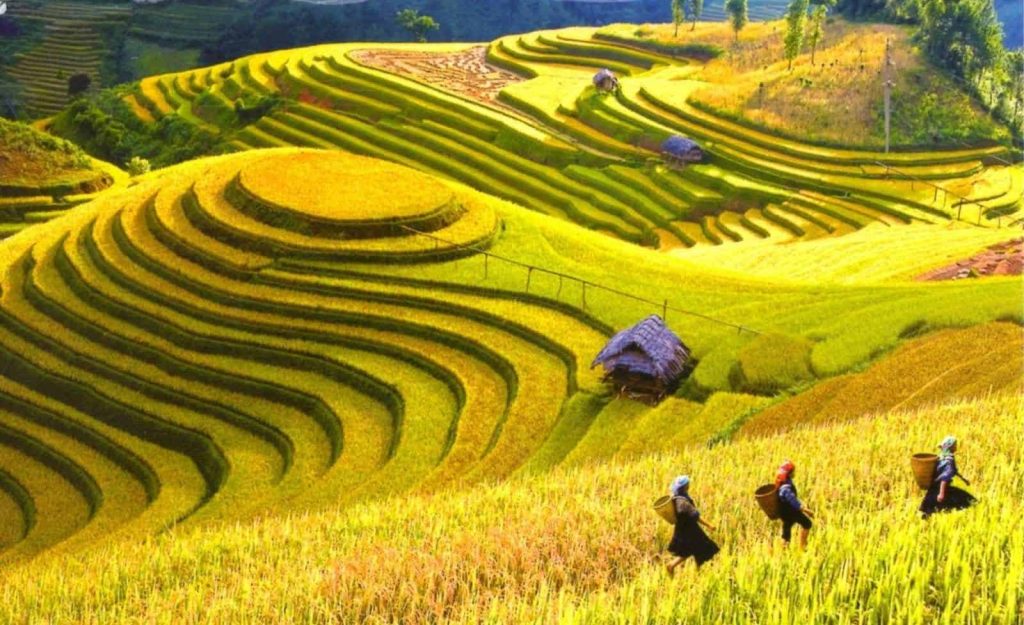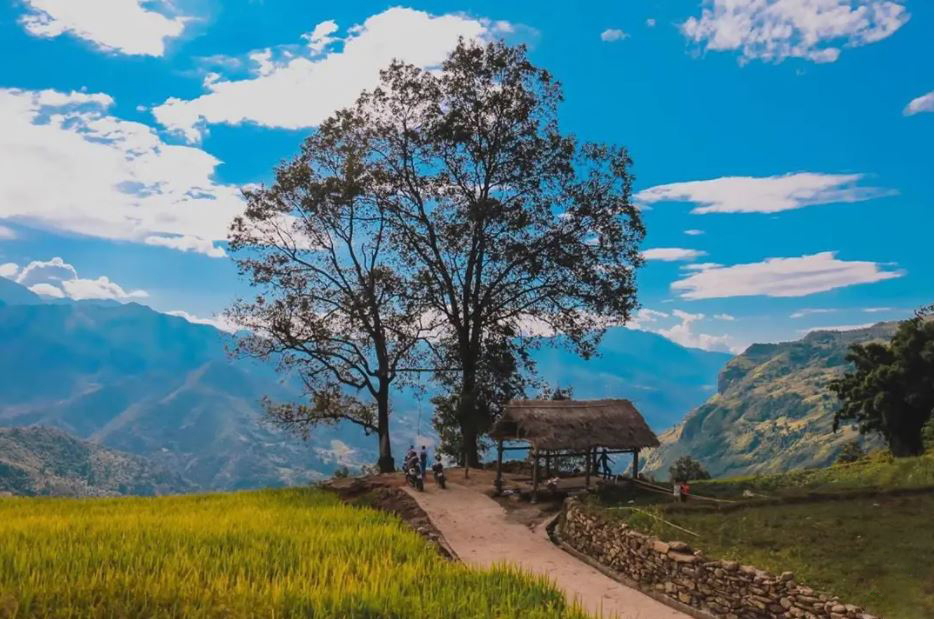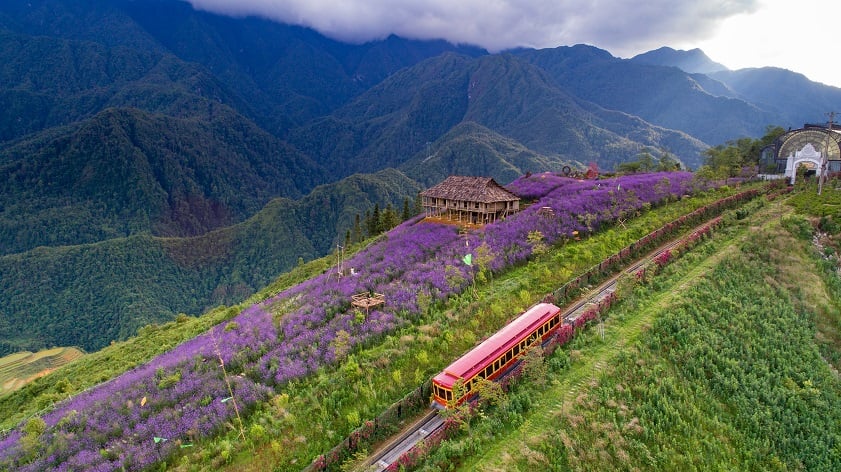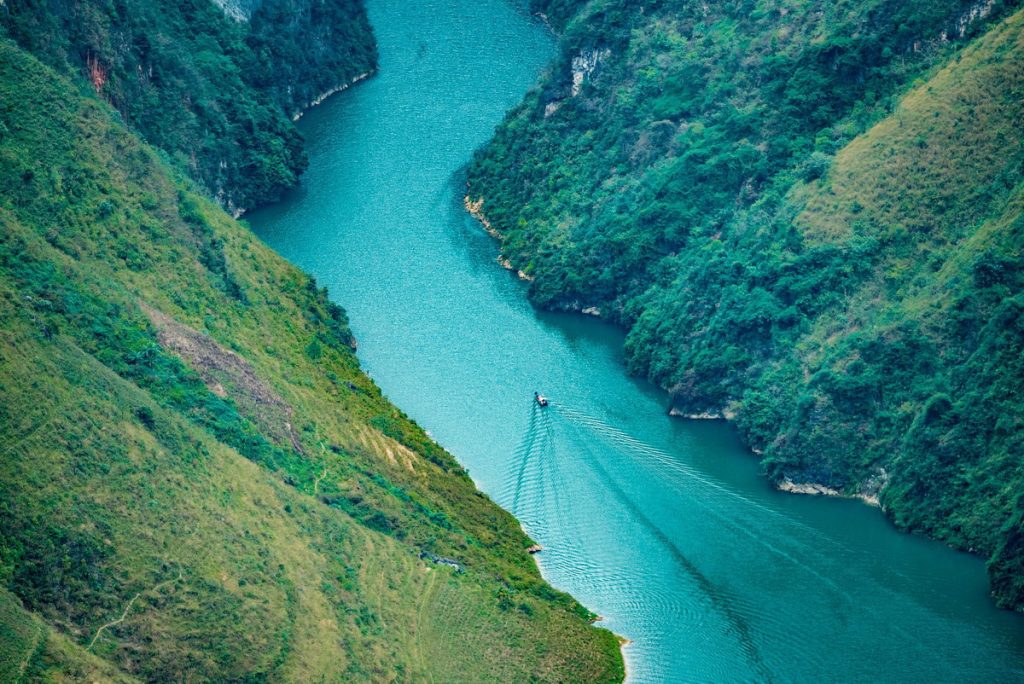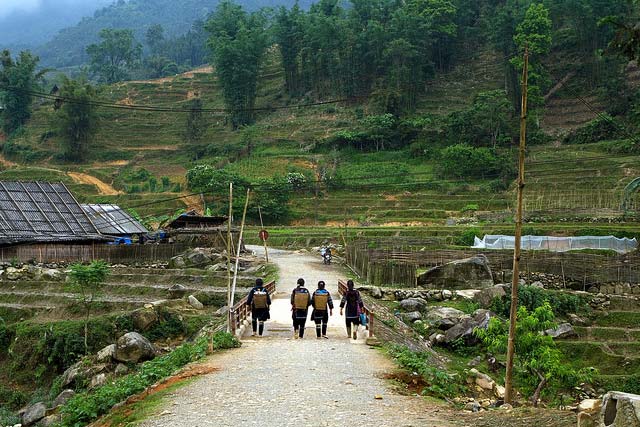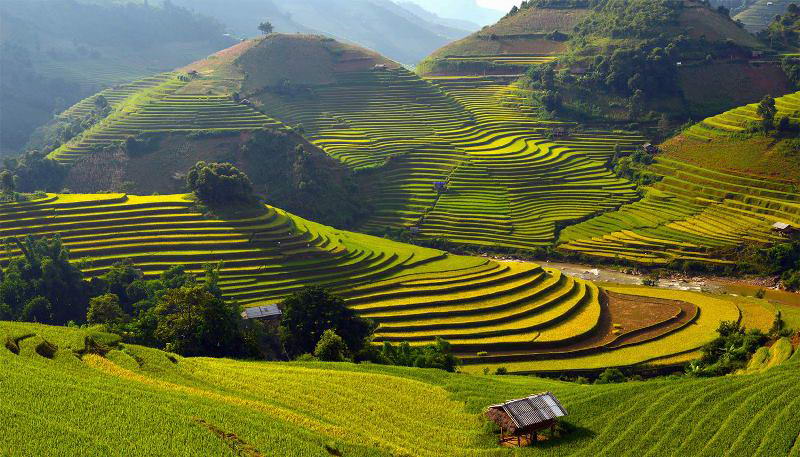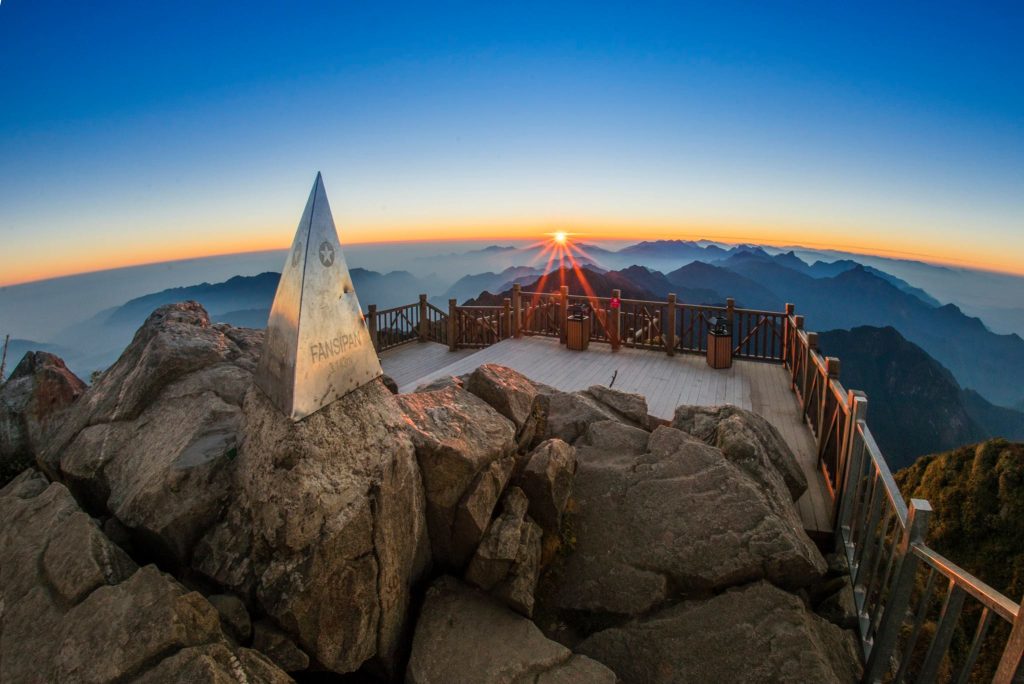Tham Ma Pass
Tham Ma Pass, located in Ha Giang province of northern Vietnam, is renowned for its stunning panoramic views and dramatic landscapes. Situated along the road from Ha Giang City to Dong Van town, this mountain pass offers travelers breathtaking vistas of rugged mountains, deep valleys, and terraced fields carved into the hillsides.
The pass is characterized by its winding roads that traverse through the rocky terrain of the Dong Van Karst Plateau Geopark, a UNESCO Global Geopark known for its unique karst formations and geological diversity. Tham Ma Pass provides an ideal spot for photography enthusiasts to capture the natural beauty of northern Vietnam, particularly during sunrise or sunset when the light casts mesmerizing shadows over the landscape.
Visitors can also explore nearby ethnic minority villages, experience local cultures, and appreciate the peaceful atmosphere amidst the picturesque surroundings of Tham Ma Pass, making it a memorable stop on the journey through Ha Giang’s scenic landscapes.
I. When is the best time to visit Tham Ma Pass?
The best time to visit Tham Ma Pass in Ha Giang province, northern Vietnam, is during the dry season, which typically spans from October to April. This period offers the most favorable weather conditions for exploring the pass and enjoying the scenic views of the surrounding landscapes.
- October to November: These months are ideal as the weather is cool and comfortable, with clear skies that provide excellent visibility for admiring the panoramic vistas from Tham Ma Pass. The landscapes are often lush and green after the rainy season, enhancing the natural beauty of the area.
- March to April: Towards the end of the dry season, these months also offer pleasant weather with blooming flowers and vibrant foliage, adding to the picturesque setting around Tham Ma Pass.
During the dry season, visitors can expect sunny days, cooler temperatures, and minimal rainfall, making it perfect for outdoor activities such as sightseeing, photography, and exploring the surrounding countryside. The views from Tham Ma Pass, especially during sunrise or sunset, are particularly spectacular and offer photographers stunning opportunities to capture the rugged beauty of the karst landscapes and terraced fields.
It’s advisable to avoid visiting during the rainy season from May to September, as heavy rainfall can lead to muddy roads, reduced visibility, and potentially difficult travel conditions, which may impact access to Tham Ma Pass and the surrounding attractions in the Dong Van Karst Plateau Geopark.
II. What to do in Tham Ma Pass?
Tham Ma Pass, situated in Ha Giang province of northern Vietnam, offers visitors a range of activities and experiences amidst its stunning natural landscapes:
- Scenic Viewing: Marvel at the breathtaking panoramic views from Tham Ma Pass overlooking the Dong Van Karst Plateau Geopark. The pass provides unparalleled vistas of rugged mountains, deep valleys, and terraced fields, making it a perfect spot for photography and sightseeing.
- Photography: Capture the dramatic landscapes of Tham Ma Pass during different times of the day. Sunrise and sunset offer particularly spectacular lighting conditions, casting beautiful hues over the karst formations and creating stunning photo opportunities.
- Explore Ethnic Minority Villages: Visit nearby villages such as Lung Cam village to experience the traditional cultures and lifestyles of ethnic minority groups in Ha Giang. Explore local markets, interact with residents, and learn about their customs, handicrafts, and daily routines.
- Hiking and Nature Walks: Take leisurely hikes or nature walks along trails near Tham Ma Pass to immerse yourself in the natural beauty of the Dong Van Karst Plateau Geopark. Trails often lead through scenic landscapes, allowing you to appreciate the diverse flora and fauna of the region.
- Visit Dong Van Town: Explore Dong Van town, a cultural hub in the geopark known for its ancient architecture, markets, and historical sites. Visit Dong Van Old Quarter to learn about the local history and enjoy authentic Northern Vietnamese cuisine in local restaurants.
- Geological Exploration: Learn about the unique geological features of the Dong Van Karst Plateau Geopark, a UNESCO Global Geopark known for its karst landscapes and geological diversity. Visit geological sites and interpretive centers to deepen your understanding of the area’s natural history.
- Relaxation and Reflection: Take time to relax and appreciate the serene atmosphere of Tham Ma Pass. Enjoy moments of tranquility amidst the stunning landscapes and peaceful surroundings, away from the hustle and bustle of city life.
Visiting Tham Ma Pass offers a blend of adventure, cultural exploration, and natural beauty, making it a memorable destination for travelers seeking to discover the hidden gems of northern Vietnam.
III. How to get to Tham Ma Pass?
Getting to Tham Ma Pass in Ha Giang province, northern Vietnam, involves several steps depending on your starting point:
- Travel to Ha Giang City:
– From Hanoi: The journey typically begins from Hanoi. You can travel to Ha Giang City by bus, which takes approximately 6-7 hours, or by renting a car or motorbike for more flexibility. There are also overnight sleeper buses available from Hanoi to Ha Giang City.
- From Ha Giang City to Dong Van Town:
– By Local Bus or Minivan: From Ha Giang City, take a local bus or minivan to Dong Van town. Buses and minivans depart regularly from Ha Giang bus station and take about 3-4 hours to reach Dong Van town.
– By Motorbike or Car: Many travelers prefer to rent a motorbike or hire a car with a driver from Ha Giang City to Dong Van town. This option allows you to enjoy the scenic drive through mountainous terrain and make stops along the way to explore local villages and viewpoints.
- From Dong Van Town to Tham Ma Pass:
– By Motorbike or Car: From Dong Van town, continue your journey to Tham Ma Pass by motorbike or car. The road leading to Tham Ma Pass may be narrow and winding in parts, but it offers stunning views of the karst landscape and terraced fields along the way.
– Local Guide or Tour: Alternatively, you can hire a local guide or join a guided tour from Dong Van town to Tham Ma Pass. Local guides are knowledgeable about the area’s history, culture, and best viewpoints, enhancing your experience of visiting Tham Ma Pass.
- Prepare for the Journey:
– Ensure you have sufficient supplies such as water, snacks, and necessary medications, especially if you plan to spend time hiking or exploring around Tham Ma Pass.
– Check weather conditions and road conditions before starting your journey, as some roads in the area may be affected by seasonal weather changes.
- Guided Tours and Services:
– If you prefer organized travel arrangements, consider joining a guided tour from Ha Giang City or Dong Van town to Tham Ma Pass. Many tour operators offer packages that include transportation, accommodation, meals, and guided activities such as hiking and cultural experiences.
Visiting Tham Ma Pass provides an opportunity to experience the natural beauty and cultural richness of the Dong Van Karst Plateau Geopark. Plan your journey to enjoy the scenic landscapes and serene atmosphere of this iconic destination in northern Vietnam.
If you need more information, please contact us Mail: zgotravelvietnam@gmail.com or WhatsApp: +84 9766 09451.
By the way, a new beautiful place called Ha Giang loop which is very interesting, check this out: https://www.getyourguide.com/hanoi-l205/from-hanoi-3-day-ha-giang-loop-small-group-t739208
For Lan Ha Bay & Halong Bay trip, check this out: https://www.getyourguide.com/ha-long-l119790/from-ha-noi-2-day-lan-ha-ha-long-bay-5star-with-balcony-t739040/
Or https://www.tripadvisor.com/AttractionProductReview-g3737857-d28097153-Lan_Ha_Bay_Ha_Long_Bay_5_Stars_Private_balcony_2_days_trip-Tuan_Chau_Island_Halon.html

